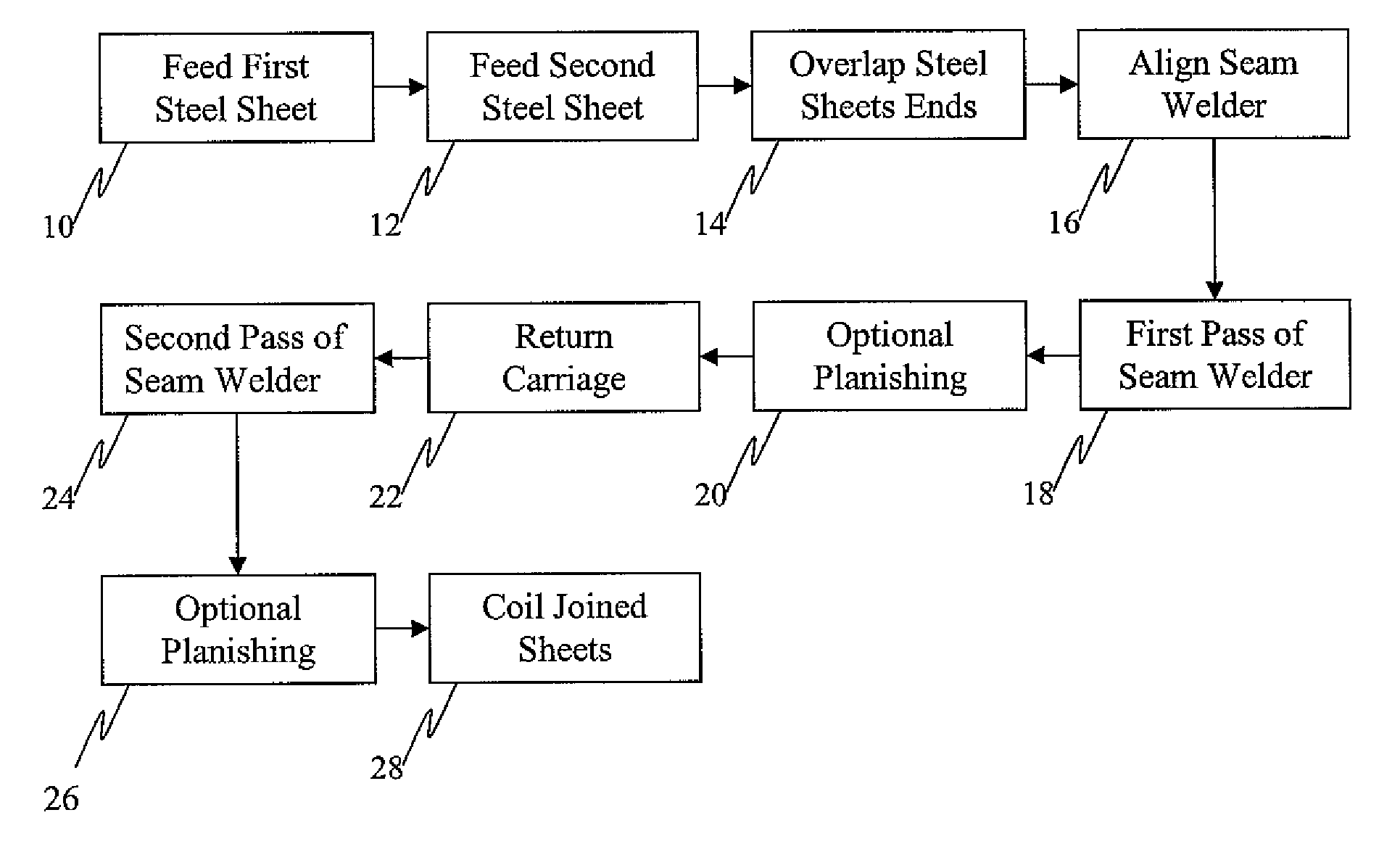Seam welding
a seam welding and multi-pass technology, applied in the direction of welding apparatus, manufacturing tools, transportation and packaging, etc., can solve the problems of high surface heating (expulsion), brittle and weak welds, and high welding parameters, and achieve high strength.
- Summary
- Abstract
- Description
- Claims
- Application Information
AI Technical Summary
Benefits of technology
Problems solved by technology
Method used
Image
Examples
examples 1-6
[0042]Table 1 sets forth parameters for exemplary double-pass welding operations carried out on various gauges of AHSS galvanized TRIP grade steel (780 MPa tensile strength) according to embodiments of the present invention.
[0043]
TABLE 1First Weld PassSecond Weld Pass1st Coil2nd CoilCurrentCurretGaugeGauge(PrimarySpeedPressure(PrimarySpeedPressureEx.(inch)(inch)Amps)(imp)(psi)Amps)(ipm)(psi)10.0390.039760120803503008020.0470.047760120803503008030.0550.05576090854003009040.0630.06376090854003009050.0710.07176080904003009060.0790.079760809040030090
PUM
| Property | Measurement | Unit |
|---|---|---|
| thickness | aaaaa | aaaaa |
| tensile strength | aaaaa | aaaaa |
| tensile strength | aaaaa | aaaaa |
Abstract
Description
Claims
Application Information
 Login to View More
Login to View More - R&D
- Intellectual Property
- Life Sciences
- Materials
- Tech Scout
- Unparalleled Data Quality
- Higher Quality Content
- 60% Fewer Hallucinations
Browse by: Latest US Patents, China's latest patents, Technical Efficacy Thesaurus, Application Domain, Technology Topic, Popular Technical Reports.
© 2025 PatSnap. All rights reserved.Legal|Privacy policy|Modern Slavery Act Transparency Statement|Sitemap|About US| Contact US: help@patsnap.com


